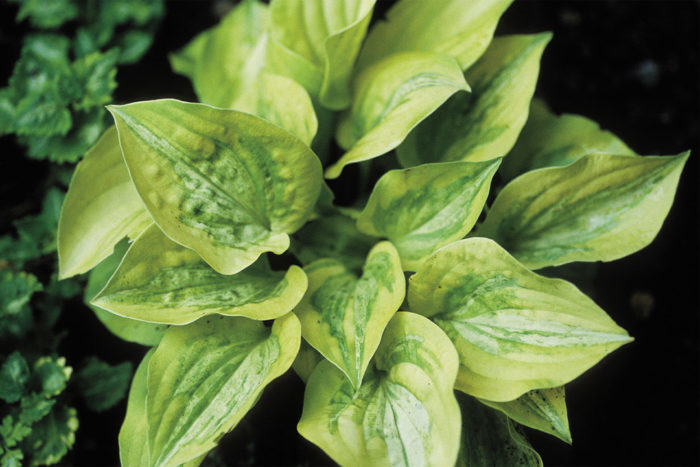
Hostas (Hosta spp. and cvs., USDA Hardiness Zones 3–9) are a staple in almost every perennial garden that enjoys open shade; fertile, well-drained soil; and extended cold weather. They have been one of America’s most popular perennials for years. Many gardeners think of hostas as large specimen or anchor plants, but there is another world of hostas that has quietly been building momentum: a world where color, shape, excitement, and versatility are in miniature. I am talking, of course, about little hostas. Although there have always been small hostas, they have had a reputation for being difficult to find and grow. Public perceptions, fortunately, have changed, and a wide variety of easy-to-grow cultivars are now available. These little hostas are classified into three categories: small, very small, and mini. The sizes are descriptive, but they also help determine placement and cultural needs. Go ahead—find a little hosta to indulge your whimsical side. Here are a few of my favorites.
Small hostas are well suited for garden beds
Small hostas grow between 9 and 12 inches tall and have leaves about the size of a potato chip. These hostas are suitable for traditional garden beds because their strong root systems can tolerate most garden soils and the plants are large enough to be enjoyed without having to get down on your knees to see them.
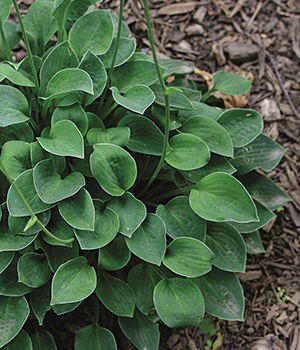
‘Baby Bunting’ is a reliable clumper with heart-shaped blue leaves. It will quickly form a polite mound in a woodland garden or in any other place that doesn’t receive direct sun. It has bright purple flowers in summer and makes a good edging plant.
‘Silver Threads and Golden Needles’ has heart-shaped leaves with a dull yellow edge and a center that is primarily green but lightly brushed with white and chartreuse. These colors vary depending on light conditions, but getting it right is worth a little tweaking. Four to five hours of morning light is perfect. Because of its need to get the proper amount of light, this little hosta also performs well in an easily moved, well-drained container.

‘Marrakech’ is as exotic as its name suggests, with rippled, lance-shaped, light yellow-green leaves. The underside of the leaves is white, which adds to the plant’s otherworldly appearance. ‘Marrakech’ is an excellent bloomer, showing off pink flower stalks and buds that open into lavender flowers. ‘Marrakech’, like many yellow hostas, tolerates more sun than other hostas, so plant it where it will receive four to five hours of morning light.
Very small hostas perform best in raised beds and containers
Very small hostas grow about 5 to 9 inches tall with leaves slightly larger than a typical soupspoon. Very small hostas are not usually happy in crowded beds unless the bed is dedicated to little hostas. They have smaller roots than those of larger plants and are, thus, less able to compete with them. Very small hostas fare well in raised beds and containers.


Lance-shaped green leaves with a narrow white edge and a pronounced ripple effect are what make ‘Stiletto’ special. Even one of these plants adds movement and elegance to a corner of a garden. ‘Stiletto’ is also a good hosta for lining a path as it will quickly clump and is able to be divided for further planting.
There is probably no little hosta more famous than ‘Blue Mouse Ears’. It is a dependable variety with distinctive round blue leaves. ‘Blue Mouse Ears’ captures people’s imagination because it not only is adorable and grows effortlessly but also has given rise to a line of “sports” (hostas that have evolved from an original plant into many variations) that are highly sought after.


A pale yellow hosta with wavy leaves and purple petioles (or leaf stems), ‘Coconut Custard’ grows in full sun in Zone 6. But in areas farther south, it should be sited in a bright—but not overly sunny—part of the garden. ‘Coconut Custard’ and other yellow hostas look amazing in cobalt blue pots. You will want to place this plant up on something where you can see under the leaves to appreciate those purple petioles.
‘Blueberry Tart’ produces arrowhead-shaped, slightly folded, bluish green leaves. If planted in dappled shade, the blue will hold through the season; with more sun, it will lean toward true green. The leaves are substantial and will repel all but the most determined slug.


‘Little Caesar’ is a charismatic hosta with lance-shaped leaves and a white center with a wide green edge. The leaves twist out from the base of the plant in a tight and upright aspect. To hold its variegation, it needs a little more light than green or blue hostas do.
‘Little Treasure’ is one of the best hostas for tucking between rocks, in the knothole of a tree, or between exposed roots in a woodland garden. The slightly twisted leaves look almost tropical, more like a bromeliad than a hosta. I first saw it planted in a shell—an effective use for this lovely little plant.
Mini hostas are good for containers and crevices
Mini hostas grow less than 5 inches tall and have leaves about the size of a pinky fingernail. These hostas are not good candidates for beds or borders as they are too small to be appreciated there and would be overwhelmed by other plants. They perform best in containers and crevices. Mini hostas, especially those with a large area of white on their leaves, can be a little tricky to grow and require the right soil and mulch.


‘Tiny Tears’ has been around for a long time but was recently rediscovered by the fairy-garden folks—and for good reason: It is simply the best hosta for a fairy garden. Tiny teardrop green leaves form a dense mat over time. ‘Tiny Tears’ is also popular because it is reliable and easy to grow. Its lavender flowers add a nice touch.
Very narrow, rippled leaves are features you find on little varieties only; ‘Dragon Tails’ is a prime example. The overall appearance of a clump of rippled leaves is electrifying, so I recommend planting this hosta in a way that showcases its structure. ‘Dragon Tails’ looks stunning against black gravel (or, if you prefer, black mulch), where it can really show off its color and leaf habit.
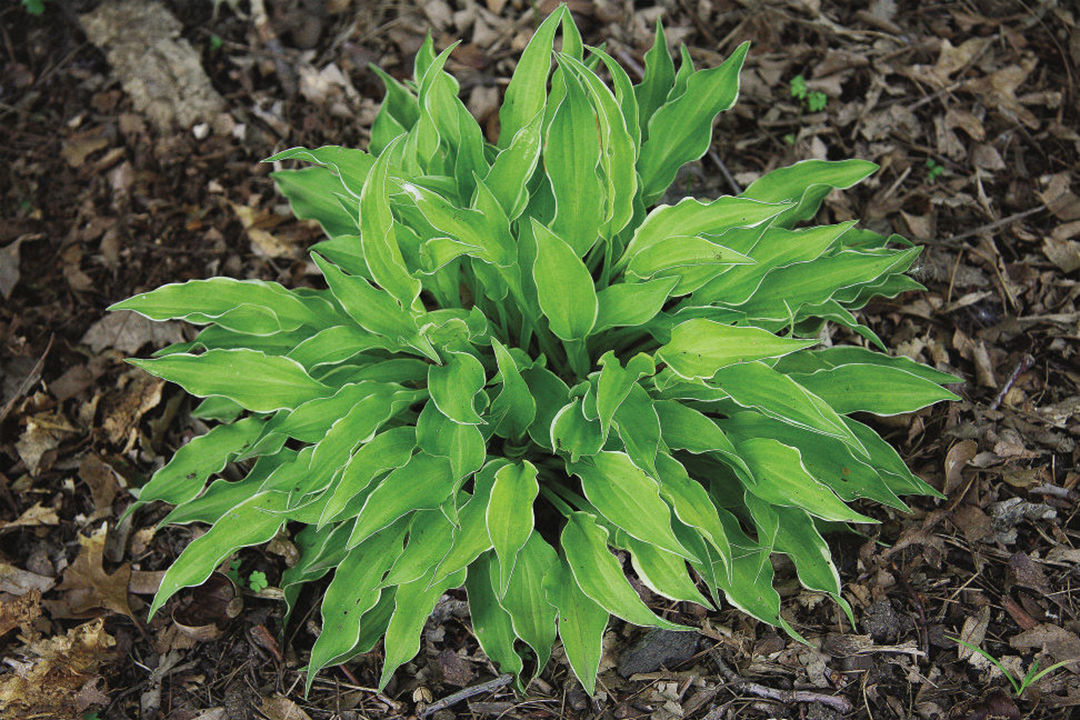
Fast-growing ‘Lakeside Down Sized’ has narrow yellow-green leaves that are slightly rippled and edged with white. It is a good hosta for edging a path as it grows quickly into a dense mound that can be divided and spaced.
Soil and mulch are the keys to success
Hostas are care-free plants. When asked how to grow them, I tell people, “Dig a hole, drop in the hosta, and get out of the way.” This is largely true for the little guys, as well; however, smaller hostas have slightly greater needs that can be met with the right soil and mulch.
The right soil makes the difference

Little hostas prefer moist, slightly acidic, well-drained soil. For containers or raised beds, I recommend mixing your own by combining 50 percent good garden soil, 25 percent organic matter, and 25 percent particulate (e.g., builder’s sand or turkey grit). The resulting mix will hold water but drain well and allow delicate roots to stretch and breathe. If you get ambitious and decide to build a hosta rockery, increase the particulate for better drainage.
Mulch protects shallow roots
Because the roots of little hostas grow near the soil surface, they need to be protected from drying. Splashback—a situation that occurs when water splashes soil onto tiny leaves—not only looks unsightly but also reduces the plant’s ability to photosynthesize. Mulch helps the roots stay moist and reduces splashback. Mulch can also keep slugs and snails at bay. Consider using living mulch, such as moss or thyme, which also looks attractive.
Kathy Guest Shadrack is a coauthor, with her husband, Michael Shadrack, of The Book of Little Hostas. They own Smug Creek Gardens in Hamburg, New York, where they grow hundreds of hostas of all sizes.
Photos: millettephotomedia.com; Mike Shadrack; and Lynn Felici-Gallant.
The following mail-order plant sellers offer the widest selection of the little hostas featured:
- Jim’s Hostas, Dubuque, Iowa; 563-588-9671; facebook.com/jims-hostas
- Mason Hollow Nursery, Mason, N.H.; 603-878-4347; masonhollow.com
- Naylor Creek Nursery, Chimacum, Wash.; 360-732-4983; naylorcreek.com
Fine Gardening Recommended Products

Razor-Back Potato/Refuse Hook
Fine Gardening receives a commission for items purchased through links on this site, including Amazon Associates and other affiliate advertising programs.

Corona® Multi-Purpose Metal Mini Garden Shovel
Fine Gardening receives a commission for items purchased through links on this site, including Amazon Associates and other affiliate advertising programs.

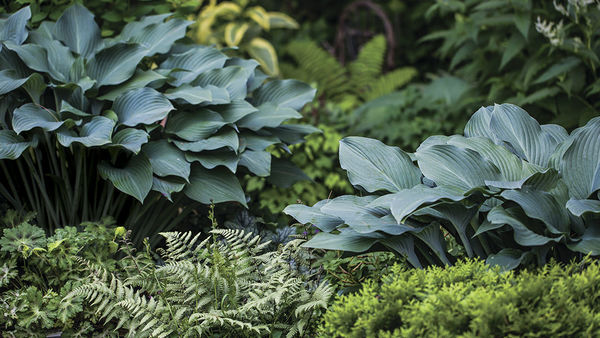
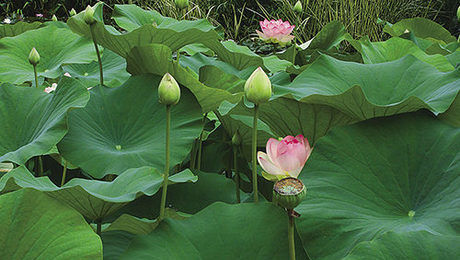

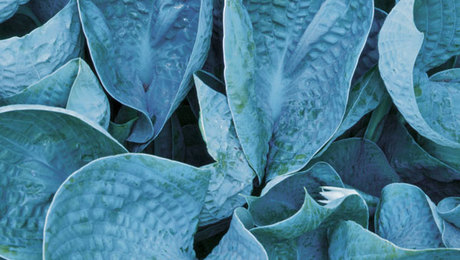













Comments
Log in or create an account to post a comment.
Sign up Log in